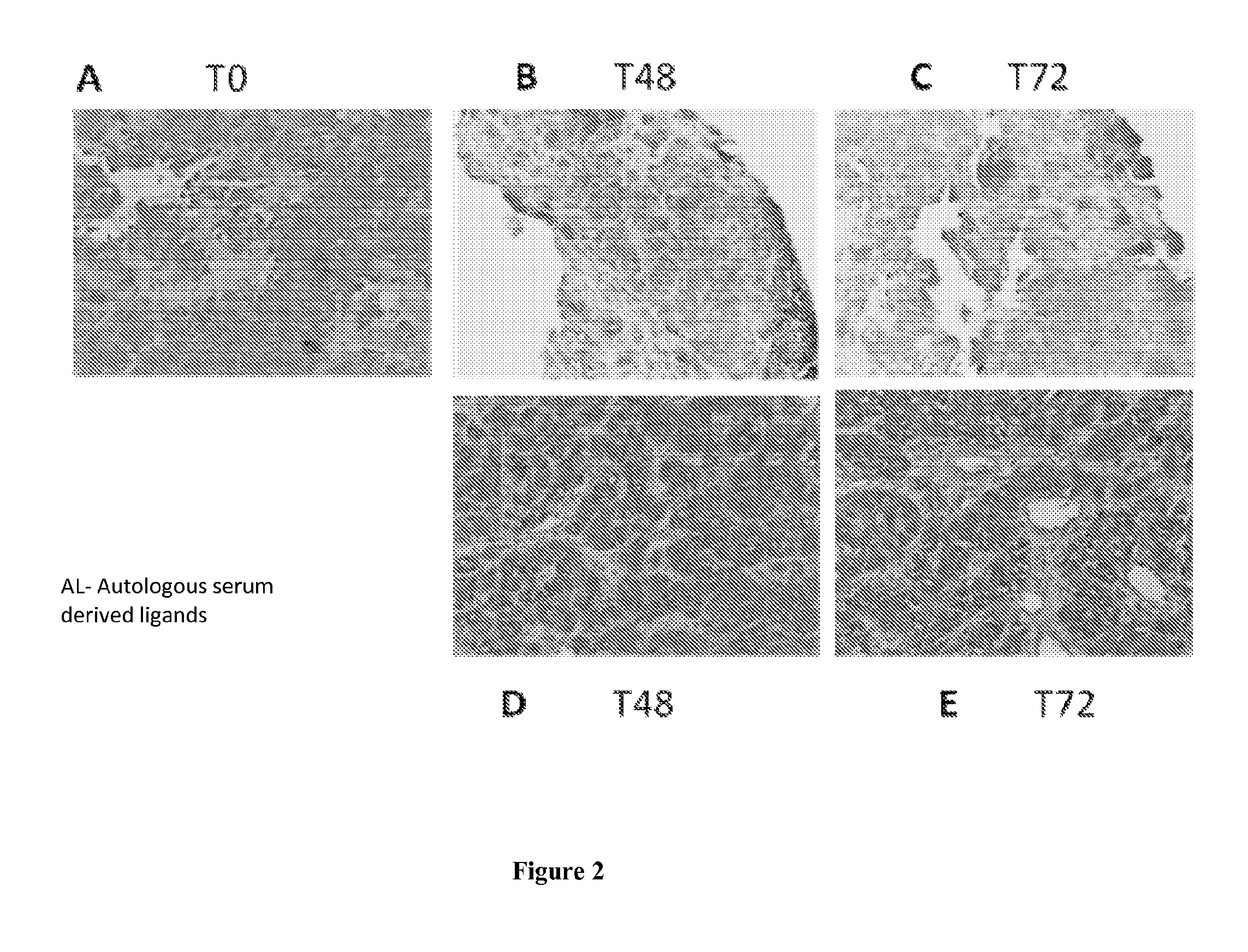Ecm composition, tumor microenvironment platform and methods thereof
a technology of tumor microenvironment and composition, applied in combinational chemistry, tumor/cancer cells, chemical libraries, etc., can solve the problems of poor correlation to clinical outcome, limited amount of information available, and inability to capture tumor microenvironment in these chemosensitivity tests
- Summary
- Abstract
- Description
- Claims
- Application Information
AI Technical Summary
Benefits of technology
Problems solved by technology
Method used
Image
Examples
example 1
Preparation and Coating of Suitable ECM Composition on Cell Plates
[0124]Source of the tumor is primary tumor tissue from patient, derived by standard protocols. Alternatively, primary human tumor tissue is implanted sub-cutaneously in immune-compromised SCID mice to generate primary human tumor xenografts for a variety of solid cancers. Following tumor volume measurement of around 1000 mm3, tumor is excised from the xenograft. ECM is isolated from either patient tumor or from xenograft tumor tissue according to the protocol provided below.
Isolation of Human ECM and its Characterization: Surgically removed fresh tumor tissues are dissected, cut into 1-2 mm sections, and suspended in dispase solution (Stem cell Technologies Inc.) and incubated for 15 min at 48° C. The tissues are homogenized in a high salt buffer solution containing 0.05M Tris pH 7.4, 3.4M sodium chloride, 4 mM of EDTA, 2 mM of N-ethylmaleimide and protease (Roche) and phosphatise inhibitors (Sigma). The homogenized m...
example 2
Explant Setup
[0131]The autologous serum ligands and autologous plasma ligands and autologous PBMCs are obtained from the patient as per standard protocols.
example 2.1
Addition of Autologous Serum Ligands and ECM Coating Recreate Tumor Microenvironment in Culture to Mimic Native Tumor Intracellular Signaling and Viability
[0132]In another embodiment, FIGS. 2, 3(A) and 3(B) illustrate the nature of the instant explants system which is designed to mimic host tumor microenvironment as closely as possible. The primary goal is to maintain tumor tissue architecture and this is where the importance of ECM component of cell plates becomes relevant. Both structural integrity and functional integrity are crucial when it comes to understanding the biology of tumor network and in elucidating drug response or resistance. Further, the instant system is devised such that it aims at maintaining the tissue microenvironment intact both from a signalling perspective as well as structural one. This is done by supplementing media with autologous serum derived ligands in explant culture, which is important for providing factors that are part of the native signalling net...
PUM
| Property | Measurement | Unit |
|---|---|---|
| Temperature | aaaaa | aaaaa |
| Temperature | aaaaa | aaaaa |
| Temperature | aaaaa | aaaaa |
Abstract
Description
Claims
Application Information
 Login to View More
Login to View More - R&D
- Intellectual Property
- Life Sciences
- Materials
- Tech Scout
- Unparalleled Data Quality
- Higher Quality Content
- 60% Fewer Hallucinations
Browse by: Latest US Patents, China's latest patents, Technical Efficacy Thesaurus, Application Domain, Technology Topic, Popular Technical Reports.
© 2025 PatSnap. All rights reserved.Legal|Privacy policy|Modern Slavery Act Transparency Statement|Sitemap|About US| Contact US: help@patsnap.com



